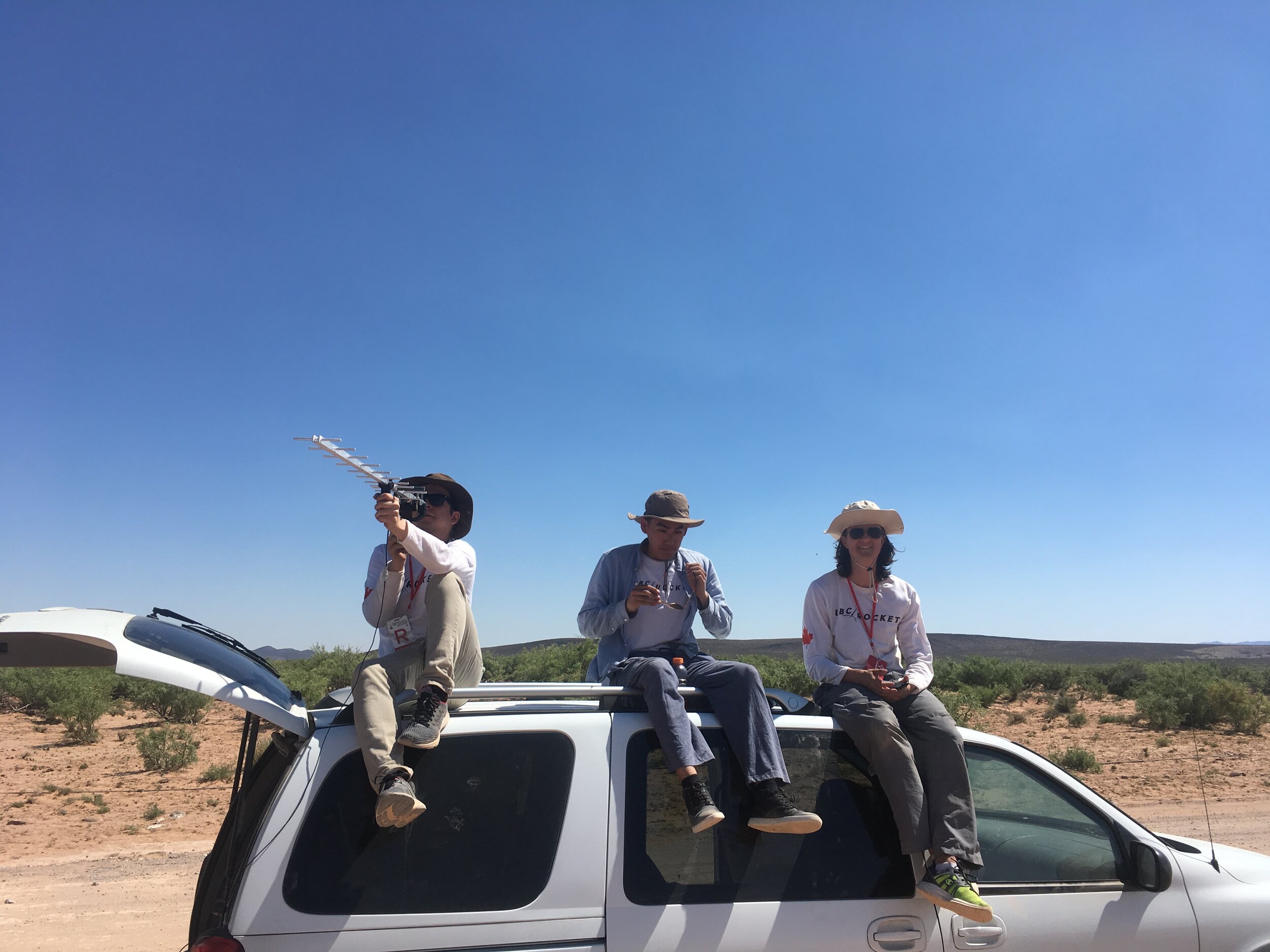UBC Rocket Avionics
Role: Avionics Team Lead
Team members:
Sam Allan (Co-Lead)
Anthony Duen
Matt Peterson
Jesse Li
Mojan Jamelzadeh
Elizabeth He
Alex Champagne
Andrei Popescu
Project Overview:
I had the pleasure of designing a high performance avionics system for UBC Rocket’s competition rocket, “Sky Pilot”. We competed in the 30,000 ft category at the Intercollegiate Rocket Engineering Competition in Las Cruces, New Mexico in June of 2019. The team successfully launched our rocket to 26,500 ft, placing third. Our system was primarily responsible for safety critical tasks such as separation events, parachute deployments and down-range tracking. In addition to the safety critical tasks we implemented high speed data logging, live telemetry down-link, remote HD camera control, satellite communications and custom ground station software.
Key Features:
Sensor suite includes barometer, accelerator, IMU and GPS.
Custom implementation of Teensy 3.6 (Arduino friendly 32-bit ARM development board)
E-match igniter and servo motor control for deployment events
Live telemetry data sent over a 900 MHZ packet radio network
Iridium satellite communications module
Integrated Runcam HD camera control
High speed data logging (40 Hz)
Multi-day battery life
10cm x 10cm PCB. 4 layer, double sided component placement.

















In an effort to design a compact, flight-worthy system we chose to integrate everything onto one PCB instead of doing a “shield” style add-on board. We decided to use the Teensy 3.6 development board due to its compact size, high performance and large community of users. Thanks to PRJC for publishing the schematics and selling bootloader chips to support custom implementations. Lots of info about PCB layout on the pjrc forum and here.
Hardware Overview:
MCU: NXP MK66 Cortex-M4 32-bit @ 180 MHz.
Sensors: LIS331 (3-axis accelerator), MS5803 (Barometer), BNO055 (9-DOF IMU), GP-20U7 (GPS), TMP102 (Temperature), 2x thermocouples
Comms: Digi XBee-Pro 1W 900 MHz Radio, RockBLOCK 9603 Iridium SatComm Module, Piezo buzzer.
Data Logging: MicroSD SPI interface.
E-match igniter circuit: MOSFETS and optoisolators.
Servo: Turnigy TGY-20C Servo (40 kg-cm) for CO2 tank puncture
Camera: RunCam HD with serial interface
Power: 11.1V 3.5Ah Li-Ion battery, 5A replaceable automotive fuse, 3x DC-DC converters based on the LM2596 IC ( 7V, 5V, 3.3V outputs)
Schematic capture and PCB layout was done in Eagle. Although EAGLE is very much a usable (and free) piece of software, I ran into several issues that have convinced me to do future work in Altium. The hierarchical design feature in EAGLE has some serious bugs (developers are working on it) and dealing with 3D components is also quite painful. Altium handles both of these things very well.
Firmware Overview:
Firmware development started very early in the design process. Since the system controls safety critical events such as pyrotechnic separations, parachute deployments and downrange tracking we had to do our absolute best to make sure the firmware was up to the task. Using the Teensy “Arduino friendly” development board allowed us to use (and modify) many open source libraries. A fairly complex state machine was developed to execute various tasks thought the different stages of flight. We were able to monitor the system’s health remotely and “arm” the system for flight. We also implemented auto launch detect to automatically start high speed data logging and camera recording in case we lost radio contact before launch. Various data filtering algorithms were tested to filter out sensor noise that could lead to catastrophic premature state changes. A “Mach lockout” state was implemented to mitigate the fact that were were not able to do any supersonic test flights. In the trans-sonic portion of the flight, shock waves effect the barometer readings in hard to predict ways and could trigger early separation. This was solved by detecting when the rocket was about to go supersonic and locking out any deployment events until the rocket returned to subsonic flight.
Github link below:
https://github.com/UBC-Rocket/FLARE
Testing:
We tried to test as often as possible throughout the design process. Early tests were simple benchtop motion sensor experiments but quickly progressed to extensive vacuum chamber testing, and drone flights. Rocket separation events were tested with live pyrotechnic charges and pressure vessel punctures (small CO2 canisters). To test data filtering algorithms and the state machine test data was generated in MATLAB and fed into the avionics board via a serial connection. This allowed us to run more tests on the actual flight hardware/firmware.
Suppliers:
Digikey
Digi Radios
JLCPCB
AliExpress
Lee’s Electronics
RP Electronics

